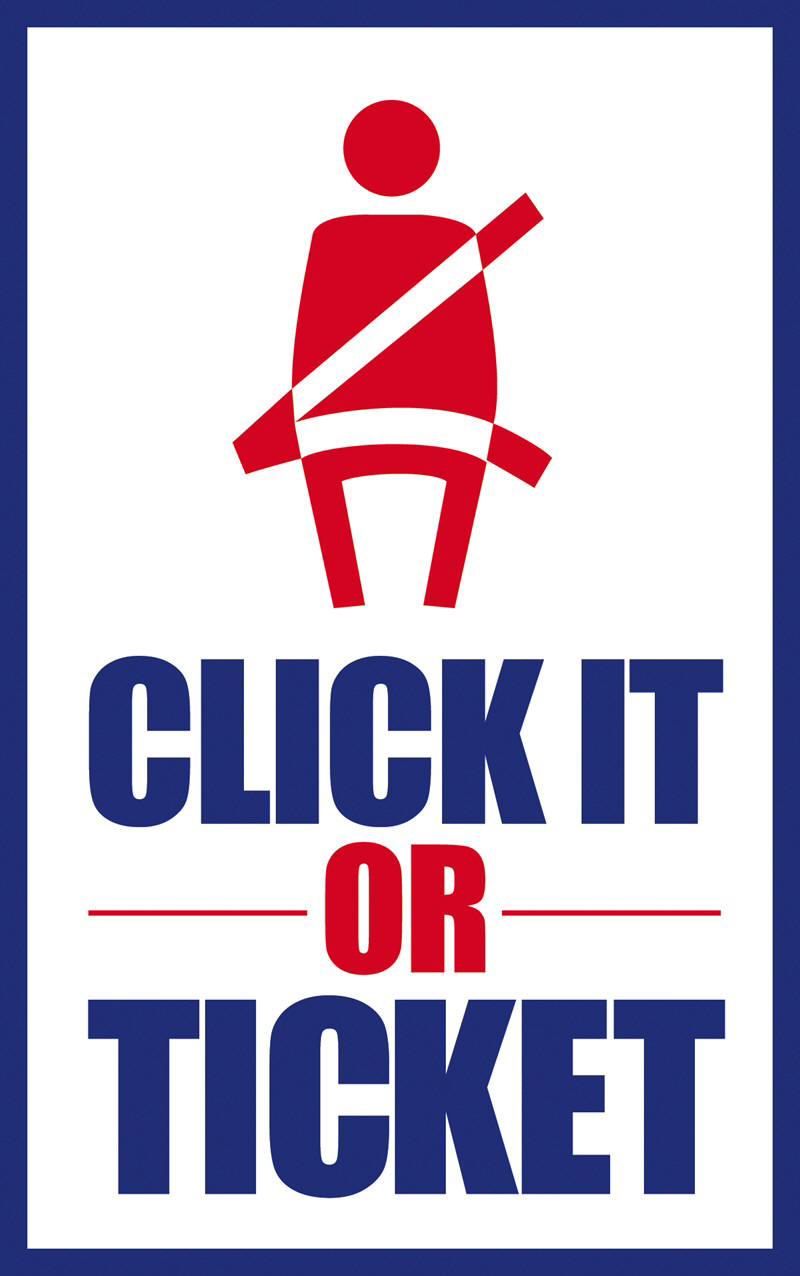Word Format
 Just a few weeks ago the Government of The Bahamas began
enforcing the seat belt law. The law was passed in 2002,
but it was not enforced because of public outcry. Isn’t
that interesting? A law that will actually save lives was
criticized by the very citizens whose lives it will save.
Experts tell us that “Seat belts are your first line of
defense against injuries or death.” Seat belts prevent a
passenger from being thrown out of the car and crushed by
it. Since the law has been enforced, I am excited as I
drive to see that most of the drivers have their seat belts
on. It is so refreshing to see how so many of us are so
obedient to the law of the land. I wonder whether it is
only because we were forced to do so or we believe that seat
belts really work.
Just a few weeks ago the Government of The Bahamas began
enforcing the seat belt law. The law was passed in 2002,
but it was not enforced because of public outcry. Isn’t
that interesting? A law that will actually save lives was
criticized by the very citizens whose lives it will save.
Experts tell us that “Seat belts are your first line of
defense against injuries or death.” Seat belts prevent a
passenger from being thrown out of the car and crushed by
it. Since the law has been enforced, I am excited as I
drive to see that most of the drivers have their seat belts
on. It is so refreshing to see how so many of us are so
obedient to the law of the land. I wonder whether it is
only because we were forced to do so or we believe that seat
belts really work.
There are important decisions we also have to make to
prevent our lives from being ‘crushed’ by the unexpected
‘accidents’ of life. Some of these decisions are about our
marriages. I wonder if we were told to do something to
save our marriages, would we also refuse to do it.
Unfortunately, the answer is yes. There are those who
refused to obey the seat belt law because they argued that
the fines were too high or that they had no seat belts in
their cars and it was too expensive to purchase them.
Similarly, many married people refuse to strap on their
marital “seat belts” of commitment and romance
that will most likely prevent them from being “thrown out”
of the marriage when “hitting against the wall” of
disagreements. In the few paragraphs that follow, you will
read about the marital “seat belts” that can minimize
catastrophe in marriage.
THE INTERESTING FIGURES
During a life time how many times would a driver or a
passenger use a seat belt or click the seat belt lock to
insert or unlock the seat belt? I calculated some figures
that are startling. Assuming that the average length of
driving is twenty-five years, a driver with children who has
the regular nursery pickups, food store and family trips,
etc. would click the seat belt lock at least ten times a
day. That would mean the driver would voluntarily click his
or her seat belt lock 70 times a week, or 300 times a month,
or 2555 a year. After twenty-five years a driver would have
clicked the seat belt lock 63,875 times. A delivery driver
who goes in and out of the vehicle several times a day would
have clicked the
seat belt lock more than 100,000 times in twenty-five
years.
What’s the point you might be asking? If we voluntarily
buckle-up our seat belts because the law requires it and
because it saves lives, how many times a day, a year, a
life-time, have we “buckled-up” our marriages with the “seat
belt” of love and romance? Just as every time we drive the
car we must buckle-up, so it is with marriage. An
important major difference, though, between driving and
marriage is that we secure our seat belts only when we drive
in a motor vehicle. However, we are always married,
twenty-four hours a day. There are certain things healthy
couples do each moment of the day, certain times of the day,
week, or month to make sure that the “accidents” in marriage
will not throw them against the walls of discord,
separation, or divorce.
requires it and
because it saves lives, how many times a day, a year, a
life-time, have we “buckled-up” our marriages with the “seat
belt” of love and romance? Just as every time we drive the
car we must buckle-up, so it is with marriage. An
important major difference, though, between driving and
marriage is that we secure our seat belts only when we drive
in a motor vehicle. However, we are always married,
twenty-four hours a day. There are certain things healthy
couples do each moment of the day, certain times of the day,
week, or month to make sure that the “accidents” in marriage
will not throw them against the walls of discord,
separation, or divorce.
MARITAL SEAT BELTS
The
“seat belts” in marriage have two elements. The first
element is right attitude. This is the quality of
heart that truly impacts the moment-by-moment relationship
in marriage. This is the emotional, intellectual, and
spiritual involvement and the spirit or determination to do
whatever it takes to keep the “seat belts” on. The second
element is right behavior. This is actually doing
what it takes to keep the marriage healthy and sweet. This
is doing what it takes every day, week, month, and year of
the marriage. If the first element of right attitude is
present, the second element of right behavior will most
likely follow.
RIGHT ATTITUDE
Here are the “seat belts” of right attitude in marriage.
The first “seat belt” of right attitude is that of total
commitment. Total commitment has three components:
1) A commitment to the marriage itself.
2) A commitment to keeping the marriage happy.
3) A commitment to each other in marriage. Many
individuals are only committed to the marriage itself
but not committed to doing what it takes to make it
happy. These kinds of marriages fall apart very
easily.
The
second “seat belt” of right attitude is having a
non-judgmental attitude. The latest research suggests
that the Number One predictor of marital happiness is having
a non-judgmental attitude. When issues occur and are
resolved, leave them behind and do not accuse your spouse of
them again. Also do not interpret currently perceived
negative behavior through the eyes of past experiences.
That’s being judgmental.
The
third ‘seat belt” of right attitude in marriage is humility. Humility facilitates a willingness to change
and adjust when it is needed for growth and harmony. It
makes it easy to say, “I am sorry,” and to forgive one
another.
Without these three “seat belts” of right attitude in
marriage it will be difficult to move on to right behavior.
Or if there is right behavior, it will be perceived as cold,
conditional, or forced.
RIGHT BEHAVIOR
There are countless “seat belts” of right behavior in
marriage. In the automobile a person only has one seat belt
to strap in to be well secured. However, in marriage many
seat belts are needed to hold down the marriage to prevent
permanent “injuries” where there is an “accident.” Let me
share with you some of the “seat belts” of right behavior.
-
Kissing. Kiss each other for ten seconds every day.
-
Hugging. Hug at least twice a day. If you have not
hugged each other within the past twenty-four hours
without having sex the marriage is in trouble. The
marriage can survive a day or two or even a week or more
without sex. However, it cannot survive one day without
hugs.
-
Cuddling. It is important to cuddle often without sex
on the agenda.
-
Sleeping together. Healthy couples sleep in the same
bed and go to bed together at least three times a week.
-
Eating together. Healthy couples eat together at least
three times a week, if not every day.
-
Dancing together. Dancing together occasionally
privately in your home is a really good “seat belt” for
the marriage.
-
Praying together with humility. For Christians this is
really a solid and strong “seat belt.” Don’t go a day
without it.
-
Dating. Healthy couples date each other and spend time
having fun each week.
-
Words and gestures of affirmation and appreciation.
Healthy couples show appreciation and give kind words of
affirmation to their spouses every day.
-
Curiosity. Healthy couples are curious about each
other’s world of work and play. There is an intense
level of sharing or involvement.
-
Touching. Healthy couples spend times touching each
other with no strings attached. Holding hands when
walking to the store, church, or window shopping.
These are only a few of the “seat belts” of right
behavior. Each one is not a part of one main seat belt but
a separate “seat belt” itself. When one or two “seat
belts” is missing, one may not feel it because so many
others are attached. This produces a false sense of
security and eventually more “seat belts’ get slack and the
couple wakes up one morning thrown outside of the vehicle of
marriage after hitting a “wall of conflict.”
THE FIGURES
Like the number of clicks of a car seat belt, how many times
would a couple clicks the “seat belts” of marriage or how
many hours would be spent wearing them? Keep in mind that
the “seat belt” of right attitude is never removed and the
“seat belts” of right behavior are perpetual. Using fifty
years as the length of a marriage, I calculated these
figures: Waking hours (opportunity for loving): In
fifty years, a couple would have 164,250 of waking hours as
compared to 50,000 hours of driving time. Kissing –
3041 hours of kissing or a couple would have kissed 18,250
times in fifty years. Wow! That’s far below the 63,875
clicks of the car seat belt. Hugging – 36,000 hugs
in fifty years. If we hug any less our marriages will be
weak. Eating – 18,205 hours of eating time in fifty
years. How many of these hours would couples be eating
together? Dating and having fun together – 5,200
hours spent in fifty years dating and having fun together.
That means that we would spend more hours eating and driving
than spending time together and having fun.
What’s the point you are asking? If we spend so much time
driving and clicking the seat belt lock, we need to make
sure that we are placing even greater quality energy in
keeping our marriages together. Let’s keep our marital
“seat belts” on.
Barrington H. Brennen is a marriage and family therapist and
a board certified clinical psychotherapist. Send your
requests and comments to
question@soencouragement.org P.O. Box CB-11045, Nassau, The
Bahamas or visit www.soencouragement.org or call 1-242
327 1980